You’ve probably heard a lot about so-called Eye AF mode over the past couple years. Ever since it wowed photographers with its performance in the Sony A9, manufacturer after manufacturer has released firmware updates for their flagship cameras, adding their own version of Eye AF.
In this guide we’ll first explain what Eye AF is and briefly how it works, then we’ll round up our picks for the best cameras with Eye AF you can currently buy.
In other words: what follows below are what we believe are the cameras offering the best Eye AF performance. This may sound like a very niche list, but if you’re a working professional or take your portraiture very seriously, Eye AF could be the most important feature to consider when buying a new camera.
What is Eye AF?
Eye AF is effectively an evolution of Face Detection. In Face Detection mode your camera is programmed to recognise a mouth, nose and eyes. Eye AF mode takes this concept a step further.
Sony was the first to introduce Eye AF back in 2013, but it only really became something that photographers took notice of when it was made to work in continuous AF (C-AF) mode. When it’s active, it enables the camera to identify an eye in the scene and focus on it. In C-AF mode it will track the eye around the frame and keep it sharp.
Its popularity has prompted other manufacturers to introduce the technology, and in those cameras Eye AF works largely the same.
Not to be outdone, Sony has responded in the past year by pushing the envelope further and introducing a new Animal Eye AF mode. You can read all about Animal Eye AF here and how it works.
When to use Eye AF?
Eye AF is really useful for social and wedding photographers because it enables them to ensure the most important part of the subject is sharp.
It also means that photographers can shoot at wider apertures because they don’t need the security of the extra depth of field when they know the eyes are sharp.
For a deeper dive into the many different camera types and features available, check out our range of camera buying guides.
The best cameras with Eye AF
Canon EOS R5
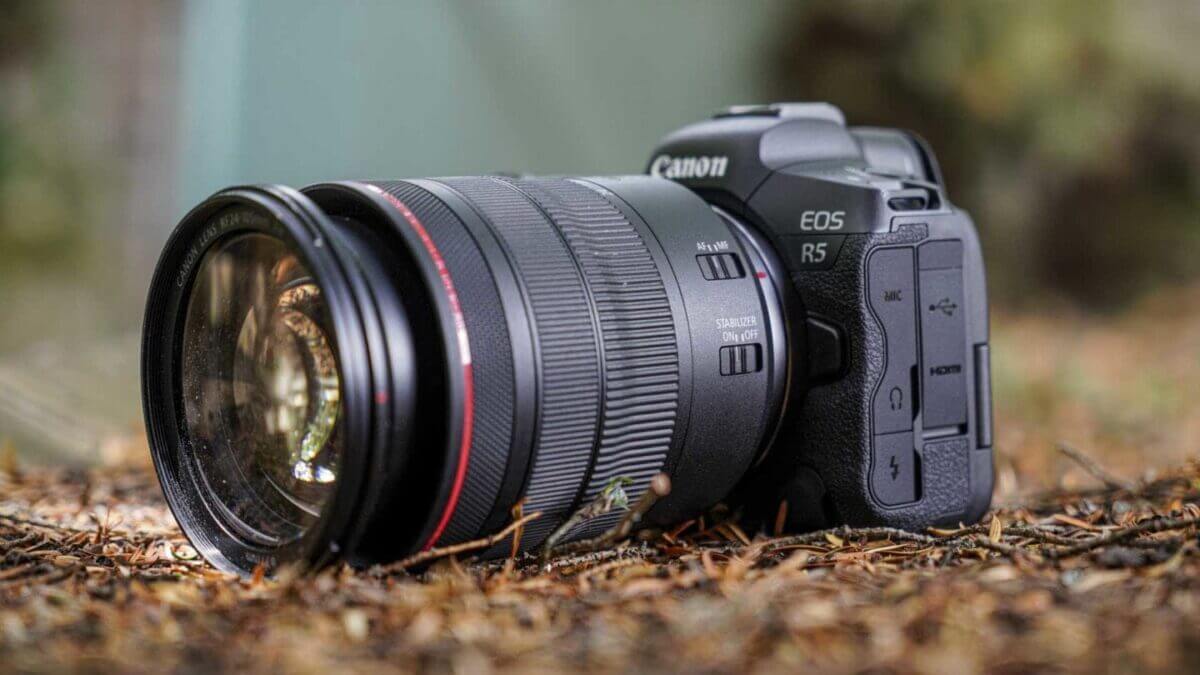
Specification
- Camera Type: Mirrorless
- Announced: 9th July 2020
- Sensor: 45Mp Full-frame Dual Pixel CMOS AF II
- Processor: Digic X
- Lens mount: RF
- Sensitivity range: Stills: ISO 100-51,200 expandable to ISO 50-102,400, Movies: ISO 100-25600, expandable to ISO ISO 51,200
- Metering: 384-zone metering with Evaluative metering (linked to All AF points), Partial metering (approx. 6.1% of viewfinder at centre), Spot metering: Centre spot metering (approx. 3.1% viewfinder at centre), Centre weighted average metering
- Shutter speed range: 1/8000sec-30 seconds and Bulb
- File formats: Raw + Jpeg/HEIF, MP4
- Maximum continuous shooting rate: Mechanical shutter: 12fps, Electronic shutter: 20fps
- Maximum video resolution: Uncropped, internal raw recording 8K video at up to 29.97fps in 4:2:2 10-bit in Canon Log (H.265) or 4:2:2 10-bit HDR PQ (H.265), Uncropped internal recording 4K video at up to 119.88fps in 4:2:2 10-bit in Canon Log (H.265) or 4:2:2 10-bit HDR PQ (H.265) 4:2:2 10-bit in Canon Log or 4:2:2 10-bit HDR PQ, 4K output over HDMI at up to 59.94fps
- Autofocus system: Dual Pixel CMOS AF II phase detection with 5940 points in stills and 4500 points in movie mode
- Viewfinder: 0.5-inch 5.76million-dot OLED electronic viewfinder with 120fps display and 0.76x magnification
- Screen: 3.15-inch 2.1-million dot vari-angle touchscreen
- Autofocus: Dual Pixel CMOS AF II with Advanced Animal AF (recognising dogs, cats and birds) supported in all video modes with 100% coverage and up to 1053 'AF segments'
- Stabilisation: In-body image stabilisation (IBIS) that works with lens IS and enables up to 8-stops of shutter speed compensation
- Storage: Dual slots, 1x CFexpress, 1x SDXC UHS-II
- Dimensions: 135.8 x 97.5 x 88mm
- Weight: 650 g / 738 g with card and battery
The Canon EOS R5 has phenomenal specification with features like a 45Mp full-frame sensor, phase detection autofocusing that covers the whole frame and a superb Eye AF for humans and animals that works in video and stills mode.
The R5’s subject detection, which can be set to Human or Animal and can be combined with Eye detection, is very good and incredibly useful. It has an uncanny ability to spot eyes and keep them sharp.
It also distinguishes between humans and animals well and can find eyes even when they are very small in the frame.
The animal detection, combined with the maximum continuous shooting rates of 12fps (frames per second) with the mechanical shutter and 20fps with the electronic shutter should be a major bonus for anyone shooting birds in flight.
The R5’s autofocus system also delivers the goods in video mode.
£4199
$3899For
- 45Mp full-frame sensor with full AF coverage
- 12fps/20fps continuous shooting with continuous AF
- Uncropped internal 8K video recording for up to 20 minutes
Canon EOS R6
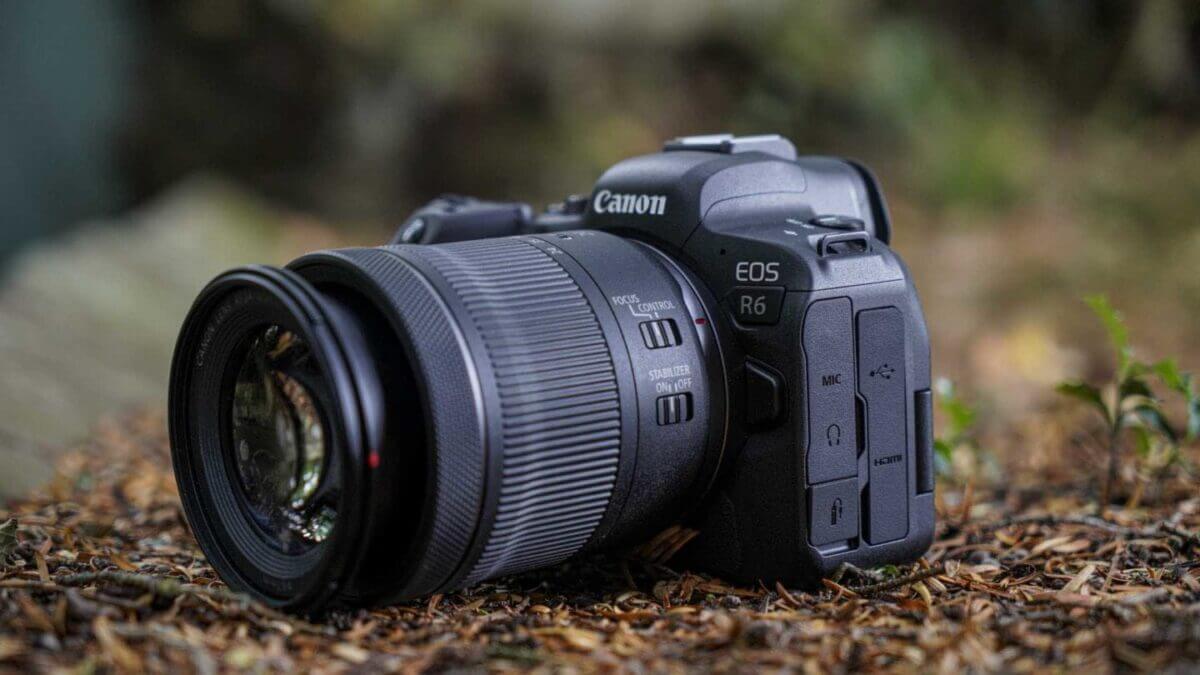
Specification
- Camera Type: Mirrorless
- Announced: 9th July 2020
- Sensor: 20Mp Full-frame Dual Pixel CMOS AF II
- Processor: Digic X
- Lens mount: RF
- Sensitivity range: Stills: ISO 100-102,400 expandable to ISO 50-204,800, Movies: ISO 100-6,400, expandable to ISO 204,800
- File formats: Raw + Jpeg/HEIF, MP4
- Maximum continuous shooting rate: Mechanical shutter: 12fps, Electronic shutter: 20fps
- Maximum video resolution: 4K video at up to 60fps, Full HD at up to 120fps. 4K video crop: 1.07x at 25p (1.19x with the Digital IS on), 1.52x at 60p
- Autofocus system: Dual Pixel CMOS AF II phase detection with 6,072 points in stills and 4968 points in movie mode
- Viewfinder: 0.5-inch 3.69million-dot OLED electronic viewfinder with 120fps refresh rate
- Screen: 3-inch 1.62-million dot vari-angle touchscreen
- Autofocus: Dual Pixel CMOS AF II with Advanced Animal AF (recognising dogs, cats and birds) supported in all video modes with 100% coverage and up to 1053 'AF segments'
- Stabilisation: In-body image stabilisation (IBIS) that works with lens IS and enables up to 8-stops of shutter speed compensation
- Storage: Dual slots, 2x SDXC UHS-II
- Dimensions: 138.4 x 97.5 x 88.4mm
- Weight: 598g / 680 g with card and battery
Canon’s advances in subject detection and eye AF are very exciting. They transform animal and wildlife photography, making it much easier to get the subject sharp even if it’s moving.
The whole sensor of the R6 is covered with autofocus (AF) points, and in stills mode there are up to 6,072 points available for selection. There’s also face, eye and animal AF tracking available which, combined with the 12fps (frame per second) maximum continuous shooting rate with the mechanical shutter and 20fps maximum shooting rate with the electronic shutter, is likely to appeal to keen wildlife, sport and action photographers. And the fact that the AF functions all work in video mode (including Eye AF) is great news for videographers too.
In fact, the EOS R6’s Face + Tracking AF system is astonishingly good. It’s simply brilliant when combined with the Subject detection (which can be set to Human or Animal) and Eye detection. In our tests, for example, it was able to spot, focus on and track the black eyes amid the black feathers of Canada geese when we could hardly make them out ourselves.
It also manages to distinguish between humans and animals very well, and it identifies eyes even when they are very small in the frame.
£2500
€2899.99For
- Similar 20Mp full-frame sensor to the Canon EOS 1D X Mark III
- 12fps/20fps continuous shooting
- Superb autofocus system
Sony A7R IV
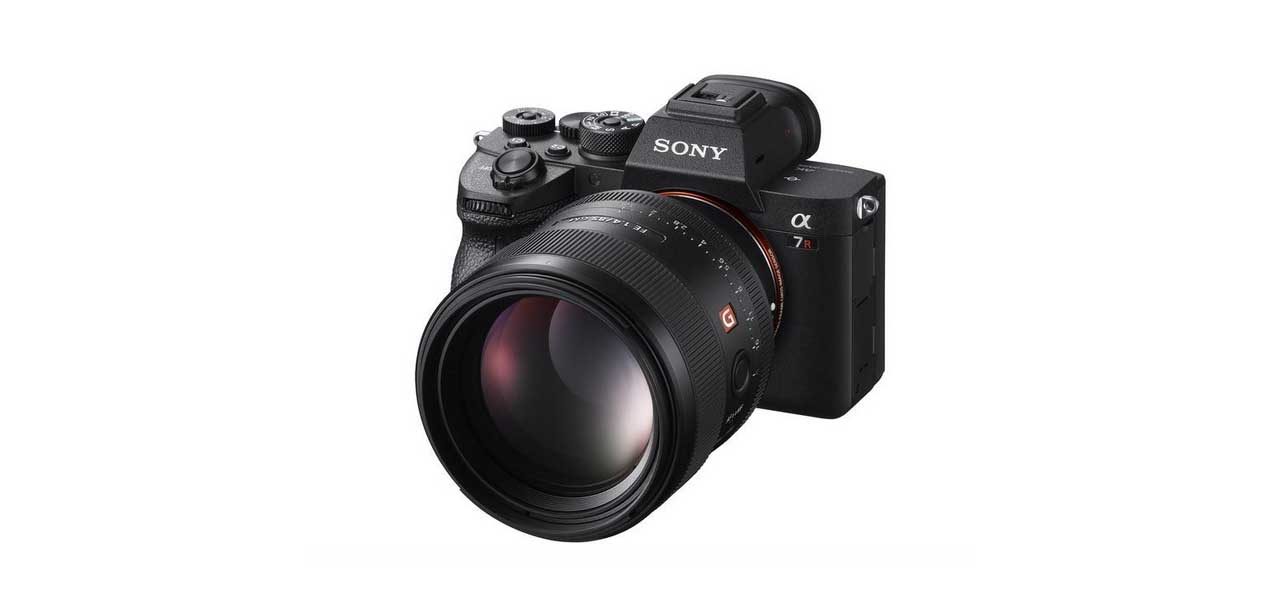
Specification
- Camera type: Full-frame mirrorless
- Announced: 16th July 2019
- Sensor: 61MP BSI full-frame sensor
- Lens mount: Sony FE
- Autofocus system: Hybrid with 567 phase detection + 425 contrast detection AF points
- Continuous Shooting: 10fps burst shooting with full AF / AE Tracking
- Video: 4K video with S-Log2/3, HDR
- Sensitivity range: Still images: ISO 100-32000 (expandable to ISO 50 to ISO 102400) Movies: ISO 100-32000
- Viewfinder: 0.5 type 5,760,000-dot OLED
- Screen: Tilting 3-inch 1,440,000-dot touchscreen
- Storage: 2x SD/SDHC/SDXC UHS-II
- Battery: Rechargeable NP-FZ100 battery supplied, Life Stills: 530 shots (viewfinder) / 670 shots (LCD), Movies: 90mins (viewfinder) / 105mins (LCD)
- Dimensions (WxHxD): 128.9 x 96.4 x 77.5mm
- Weight: 665 g / 1lb 7.5oz with battery and SD card
Sony gave the A7R III an incredible AF system, but the A7R IV takes things up a notch.
The Sony A7R Mark IV boasts a staggering 567 phase detection AF points in full-frame mode, which cover 74% of the frame. In the camera’s APS-C mode it has 325 AF points which then cover nearly the entire frame.
What’s more, the A7 IV is also built for speed. It can capture full-resolution 61-megapixel images in continuous shooting mode, and up to 68 images per continuous burst.
In addition, Sony’s AI-driven Real-time Eye AF that was introduced with a firmware update for the A7R III is available with the A7R IV. However, it also works in video mode, not just with stills. That’s a great move by Sony!
£3500
$3500For
- Superb detail resolution
- Excellent autofocus system
- High-resolution electronic viewfinder
Nikon Z7 II
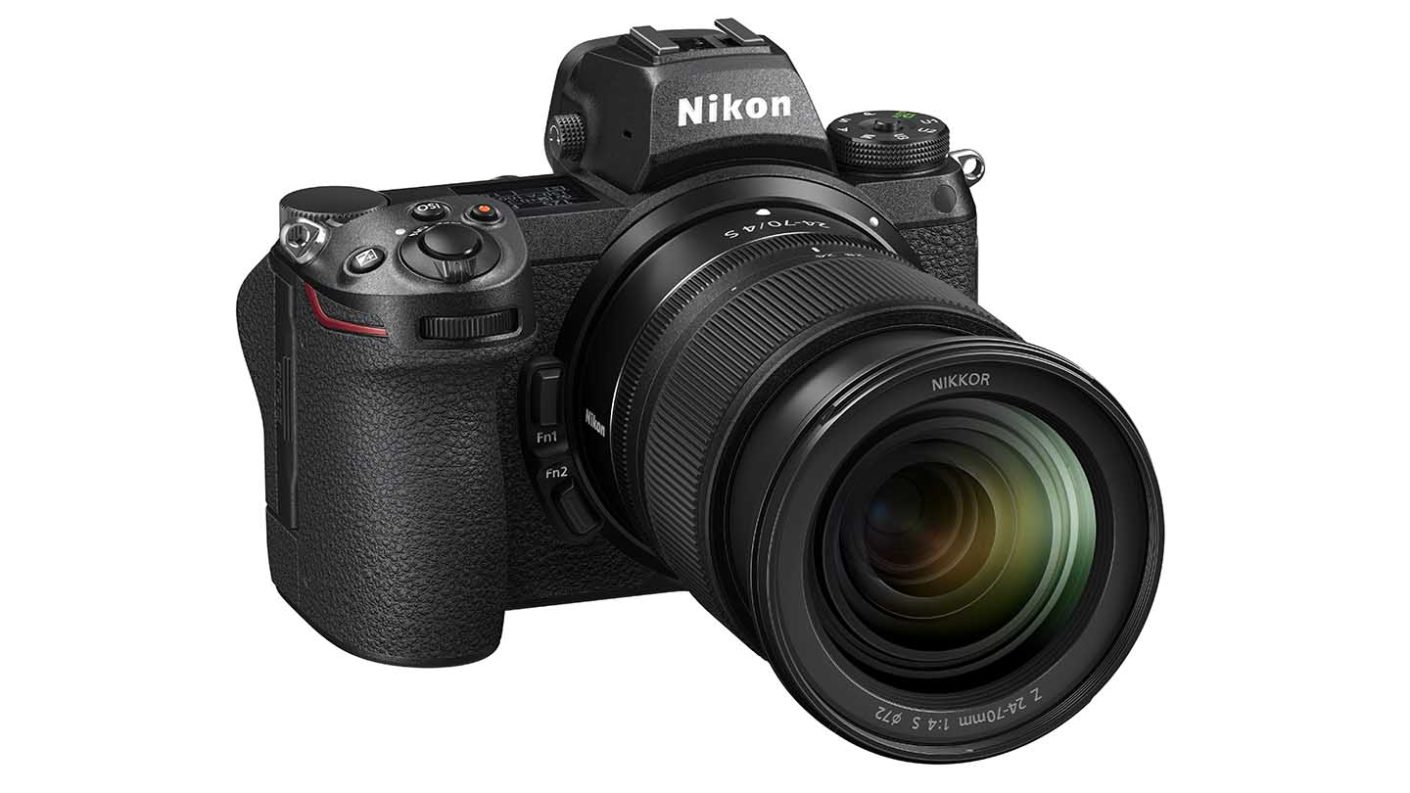
Specification
- Camera type: Full-frame mirrorless camera
- Announced: 14th October 2020
- Lens mount: Nikon Z
- Sensor: Full-frame (FX 35.9 x 23.9mm) 45.7MP backside illuminated (BSI) sensor
- Processing engine: Dual Expeed 6
- Stabilisation: 5-axis in-body VR
- Sensitivity: ISO 64-25,600, expandable to ISO 32-102,400
- Maximum continuous shooting rate: 10fps for up to 200Jpegs or 77 12-bit uncompressed raw files, 9fps with 14-bit raw files
- Autofocus system: Hybrid with phase and contrast detection
- Phase detection points: 493
- Video resolution: 4K (3840 x 2160) 60/50/30/25/24p, Full-HD (1920 x 1080) 120/100/60/50/30/25/24p, Slow-motion mode 1920 x 1080 30p x4/25p x4/24p
- Viewfinder: 0.5-inch 3.69-million-dot electronic viewfinder
- Screen: 3.2-inch 2,100,000-dot tilting touch-screen
- Storage: Dual slot 1 XQD/CFexpress and 1 SD/SDHC/SDXC
- Dimensions (W x H x D): 134 x 100.5 x 69.5mm / 5.3 x 4 x 2.8-inches
- Weight: 705g with battery and memory card but without body cap, 615g body only
Expectations for an autofocus system have moved on since the Nikon Z7 was announced in August 2018 and Nikon has done a good job with firmware updates, but the Z7 II’s extra processing power takes things a step further.
Consequently, the Z7 II’s AF system is more responsive, especially in low light. Its Eye-detection is also excellent.
There are two Eye-detection modes for use with people and animals, Auto-area AF (people/animals) and Wide-area AF (people/animals). In Auto-area AF the Z7 II looks across the whole focusing area for eyes but in Wide-area AF it searches within a comparatively small rectangle.
Wide-area AF (people/animals) is useful for flexibility of composition and with a moving subject, but Wide-area AF is a bit more reliable with a moving subject. When photographing my dog, for example, it kept his head or body shape even if his eyes weren’t detected, and it was less prone to focusing on the background.
If the animal or person is stationary or only moving slowly, then the Nikon Z7 II is pretty dependable in Auto-area or Wide-area, however, with a fast-moving subject, Dynamic-area AF, Wide-Area AF (S) or Tracking AF mode make a better choice. Tracking AF does a good job of following the subject around the frame while Dynamic-area AF and Wide-Area AF (S) rely on the photographer keeping the active area over the subject.
£2999
€3442 / $2996.95For
- High-quality sensor
- Excellent user interface and control layout
- Weatherproof build
Nikon Z6 II
Specification
- Camera type: Full-frame mirrorless camera
- Announced: 14th October 2020
- Lens mount: Nikon Z
- Sensor: Full-frame (FX 35.9 x 23.9mm) 24.5MP backside illuminated (BSI) sensor
- Processing engine: Dual Expeed 6
- Stabilisation: 5-axis in-body VR
- Sensitivity: ISO 100-51,200, expandable to ISO 50-204,800
- Maximum continuous shooting rate: 14fps for up to 200Jpegs or 124 12-bit uncompressed raw files
- Autofocus system: Hybrid with phase and contrast detection
- Phase detection points: 273
- Video resolution: 4K (3840 x 2160) 30/25/24p (60P to come with free firmware update in Feb 2021), Full-HD (1920 x 1080) 120/100/60/50/30/25/24p, Slow-motion mode 1920 x 1080 30p x4/25p x4/24p x5
- Viewfinder: 0.5-inch 3.69-million-dot electronic viewfinder
- Screen: 3.2-inch 2,100,000-dot tilting touch-screen
- Storage: Dual slot 1 XQD/CFexpress and 1 SD/SDHC/SDXC
- Dimensions (W x H x D): 134 x 100.5 x 69.5mm / 5.3 x 4 x 2.8-inches
- Weight: 705g with battery and memory card but without body cap, 615g body only
Along with some extra processing power, the human and animal eye AF that was added to the Z6 as a firmware upgrade has been enabled for the Z6 II so that it now operates in video mode. That’s good news for wedding, portrait, lifestyle and wildlife photographers and videographers.
In our tests, the Z6 II Eye AF mode spots an eye very quickly.
When the camera spots more than one eye, it displays an arrow on one side of each box it puts around each eye. You can choose which eye to focus on using the joystick on the back of the camera, however, by default the camera opts for the nearest eye.
Nikon has made big improvements in its Eye AF technology, utilising firmware updates to keep the original Z6 and Z7 fresh. We can probably safely assume Nikon will take the same approach going forward with the Z6 II and Z7 II.
£1999
€2262For
- High-quality sensor
- Excellent user interface and control layout
- Weatherproof build
Nikon Z6
Specification
- Camera type: Full-frame (FX) mirrorless
- Announced: 23rd August 2018
- Lens mount: Nikon Z
- Sensor: Full-frame (FX) 24.5Mp backside illuminated (BSI) sensor
- Autofocus system: Hybrid with phase and contrast detection
- Phase detection points: 273
- Viewfinder: 0.39-inch 2,360,000-dot OLED electronic viewfinder
- Screen: 3.2-inch 2,100,000-dot tilting touch-screen
- Dimensions (W x H x D): 134 x 100.5 x 67.5mm / 5.3 x 4 x 2.7-inches
- Weight: 675 g / 1 lb. 7.9 oz with battery and memory card but without body cap, 85 g/1 lb. 4.7 oz. camera body only
The recently released v2.0 firmware update for Nikon Z6 and Z7 mirrorless cameras adds Eye-Detection autofocus and AE (Auto Exposure) tracking in continuous high-speed (extended) mode, as well as extending the low-light detection range of the autofocus.
It’s the Eye-Detection autofocus that’s got Nikon enthusiasts excited though.
Nikon Z6 and Z7 firmware version 2.0’s Eye-Detection AF feature automatically detects and focuses on human eyes in the cameras’ auto-area AF mode (AF-S, AF-C) and focuses on them.
In a group setting, the Eye-Detection AF mode will lock on one person’s eye, and then you can use the multi-selector to switch between eyes and people. We’ve used it (here’s how to use Nikon’s Eye-Detection AF) and it’s brilliant.
You can get the Nikon Z6 from Wex Photo Video and Park Cameras in the UK, and from Adorama and B&H Photo Video in the US.
£2079
$1996.95For
- Superb quality images
- Excellent weather-sealing and build quality
- Growing range of very high-quality lenses
Nikon Z7
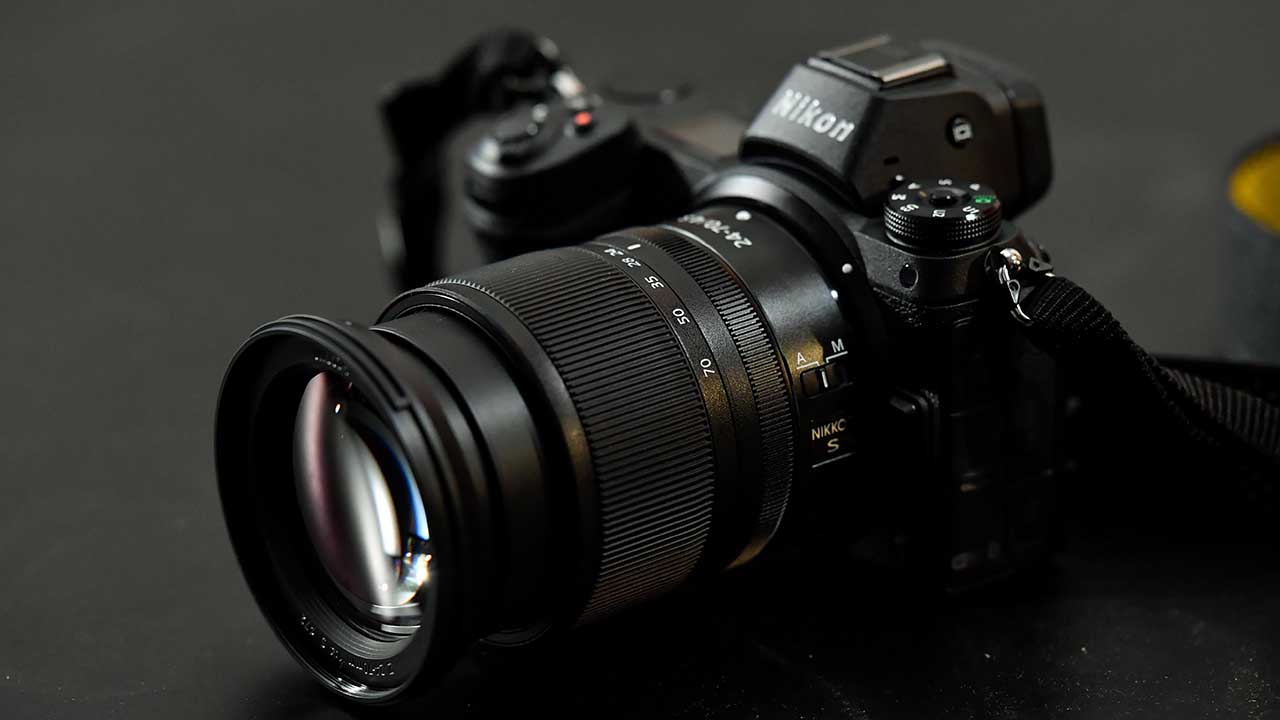
Specification
- Camera type: Full-frame mirrorless camera
- Sensor: Full-frame (FX) 45.7MP backside illuminated (BSI) sensor
- Lens mount: Nikon Z
- Autofocus system: Hybrid with phase and contrast detection
- Phase detection points: 493
- Storage: XQD/CFexpress
- Viewfinder: 0.5-inch 3.69-million-dot electronic viewfinder
- Screen: 3.2-inch 2,100,000-dot tilting touch-screen
- Dimensions (W x H x D): 134 x 100.5 x 67.5mm / 5.3 x 4 x 2.7-inches
- Weight: 675 g / 1 lb. 7.9 oz with battery and memory card but without body cap, 585g/1 lb. 4.7 oz. body only
Eye-detection autofocus, often referred to as Eye AF, is fast becoming a must-have feature. It works in a similar way to Face-detection-AF but of course, it homes in on a smaller target.
The big question everyone wants answering about Nikon Eye AF is does it work? Happily, the answer is yes, it does a pretty good job.
We wanted to see how a working photographer got on with it so we asked him to report back after using it.
Paul tested it in AF-C mode on his kids playing in the woods, as well as on posed-portraits in AF-S mode.
With a portrait subject quite large in the frame he found it locked on to the eye quickly and tracked accurately. Even when the subject turned a little side on, or was squinting in bright light, the focus box followed the eye well. However, the subject has to be quite close for it to find the eye.
When the subject is at around three-quarter length or further back, the Nikon Z7 usually finds the face, not the eye.
In the woods with the kids turning and dropping out of frame, it struggled a little more. Occasionally it locked onto something in the background and it was a little slow to reacquire focus when the subject can back into frame.
When it isn’t behaving you can quickly switch to normal tracking mode though. Paul found this pretty useful as it means you have a bit more control over what the camera is focusing on without having to come out of auto-area AF.
You can also switch between which eye the camera focuses on. When multiple eyes are detected, a yellow arrow appears at the side of the autofocus box. You can toggle between eyes using the camera’s joystick or D-Pad. With a single portrait this lets you select the left or right eye. With a group shots you can choose the best eye or person to focus on.
From what we’ve seen, we think that Eye-detection AF is a great additional feature for the Nikon Z series, and the Z6 and Z7 are among the best cameras with AF that you can currently buy.
You can get the Nikon Z7 from Wex Photo Video and Park Cameras in the UK, and from Adorama and B&H Photo Video in the US.
£2299
$3399.00For
- High-quality sensor
- Excellent user interface and control layout
- Weatherproof build
Panasonic Lumix G9
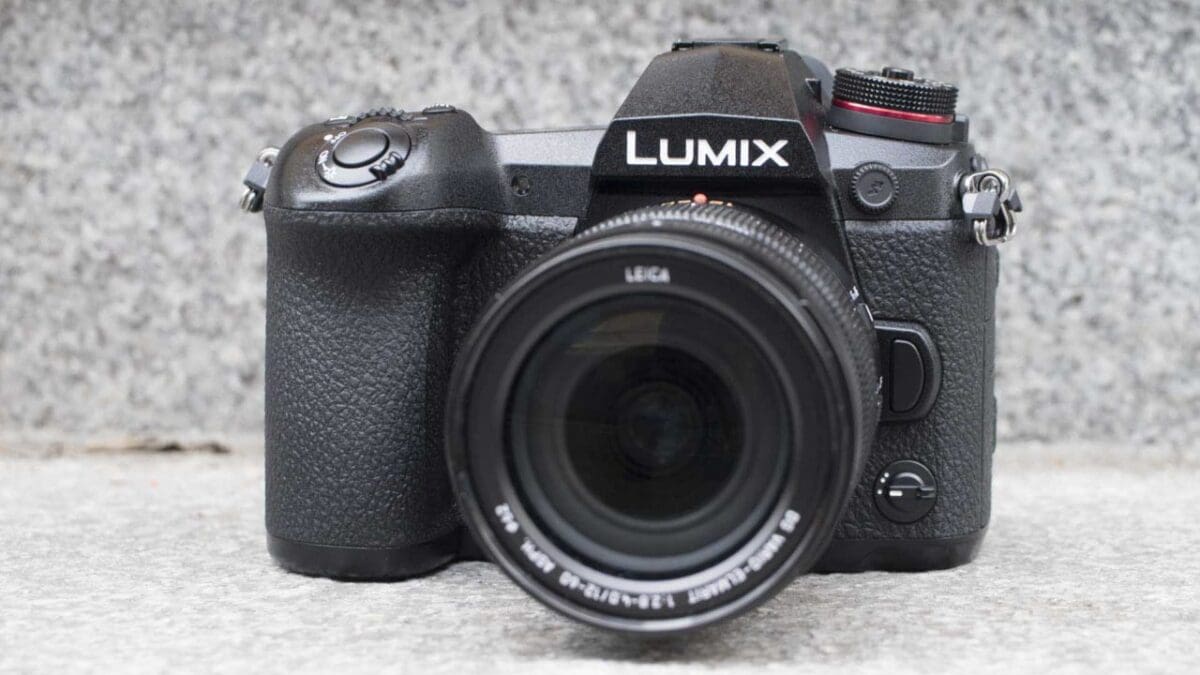
Specification
- Camera type: Micro Four Thirds mirrorless camera
- Sensor: 20.3 million Four Thirds type (17.3 x 13mm)
- Burst Mode: 20fps with AF-C, 60fps with AF-S
- Autofocus: 225-point Contrast detection
- Video: 4K (3840 x 2160) at 60p, 50p, 30p, 25p, 24p with no cropping
- Dimensions (W x H x D) : 136.9 x 97.3 x 91.6 mm / 5.39 x 3.83 x 3.61 inch (excluding protrusions)
- Weight: 658g / 1.45lb including 1 SD card x and battery, 586g / 1.30lb body only
There are six autofocus (AF) modes available on the G9: Face/Eye Detection, Tracking, 225-Area, Custom Multi, 1-Area and Pinpoint.
Panasonic has reduced the time that the G9 takes to process the information required for autofocusing and this brings a claimed focus acquisition time of just 0.04sec, the World’s Fastest according to Panasonic.
In addition, there are a few refinements that have been made to the AF system including an
AF-point Scope mode that enlarges the area to allow you to check that the right area has been targeted, focus point switching for when you swap between horizontal and vertical shooting and loop movement of the AF point so you can scroll continuously through the points rather than having to go from one side to the other and back.
Perhaps the most exciting introduction, however, is Custom AF mode which allows you to tailor the response of the AF system to suit the subject and shooting conditions. That’s something we increasingly expect to see with a high-end camera that’s capable of shooting action.
£1499
$1698 / €1729For
- Compact weather-sealed body
- Stabilisation system rated at 6.5EV
- High-quality EVF and screen
Olympus OM-D E-M1X
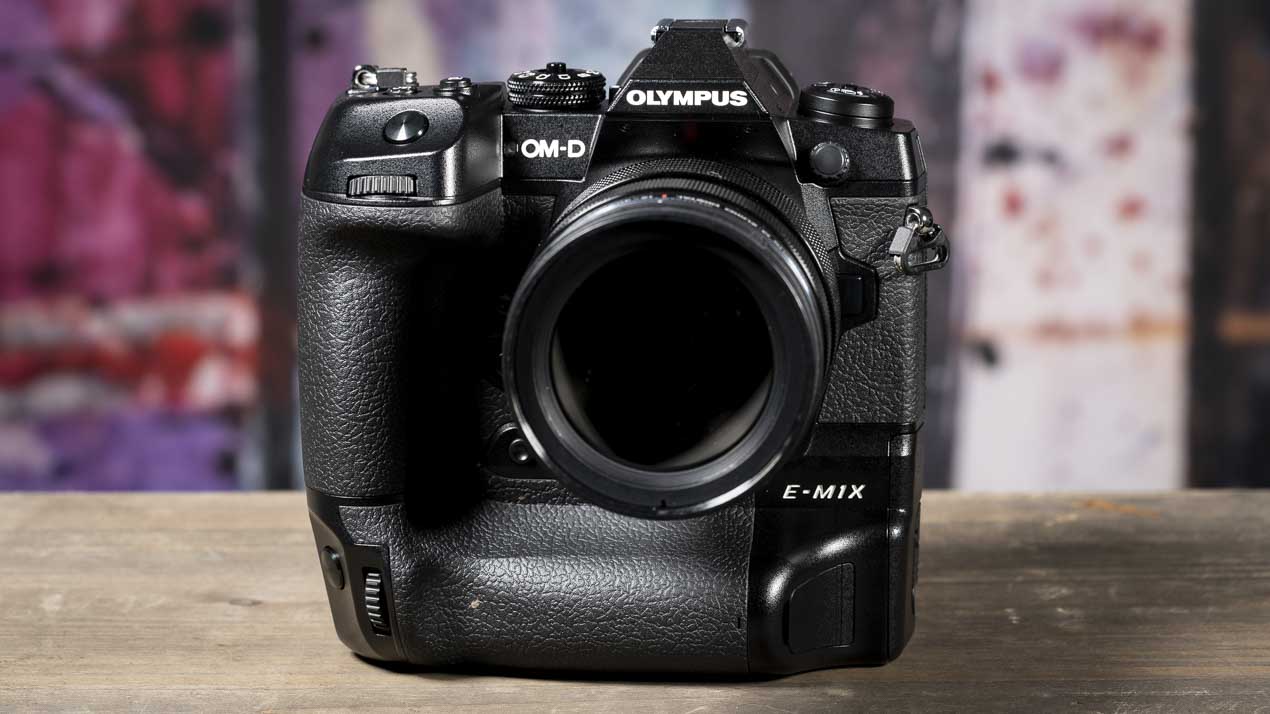
Specification
- Camera type: Mirrorless
- Sensor: 20.4Mp Four Thirds Type (17.3 x 13.0mm) CMOS
- Lens mount: Micro Four Thirds
- Sensitivity range: ISO 64-25,600
- Processing engine: 2x TruePic VIII
- Autofocus system: Hybrid with 121 cross-type points (800 in magnified view)
- Max continuous shooting rate: 18fps with AF tracking, 60fps with AF locked on first frame with electronic shutter
- Pro Capture High Mode: 60fps
- Pro Capture Low Mode: 18fps
- Burst Mode in S-AF: 15fps for 143 raw files
- Burst Mode in C-AF: 10fps for 283 raw files
- Max video resolution: 4K (4096 x 2160) at 24p
- Viewfinder: Electronic with 2,360,000 dots
- Screen: Touch-sensitive vari-angle 3-inch LCD with 1,037,000 dots
- Storage: 2x SD/SDHC/SDXC (UHS-II)
- Dimensions (WxHxD): 144.4 x 146.8 x 75.4mm
- Weight: 849g (body only), 997g (including 2 batteries and memory cards)
The OM-D E-M1 II has a very good autofocus (AF) system, but Olympus has redeveloped it for the OM-D E-M1X. As before, the imaging sensor has 121 cross-type phase detection AF points but the AF algorithm has been re-worked to boost performance. This also enables the E-M1X to use AF information from recorded images to aid tracking subjects that move unpredictably.
In addition, there’s a selection of new AF settings on the OM-D E-M1X. These include a 25-point target mode and custom AF area settings. Most exciting, however, is the new intelligent subject detection mode. This allows you to set the camera to detect specific subjects automatically.
This subject detection technology can also detect faces and eyes. What’s more, you have the option to select whether the eye detection AF should prioritise the left or right eye of your subjects.
Further good news is that the AF point can be selected using a mini-joystick multi-selector control on the back of the camera. There are two of these controls so there’s one in easy reach whether you’re using the horizontal or vertical grip.
Olympus has also boosted the AF system’s sensitivity and it’s claimed to operate at -6EV.
Check the price of the Olympus OM-D E-M1X at Amazon UK, Amazon.com, Wex Photo Video, Park Cameras, Adorama, BH Photo Video.
£2199
$1999For
- One of the fastest cameras you can buy
- Pro Capture Mode offers lots of flexibility
- High Res Shot mode is very impressive
Sony A9
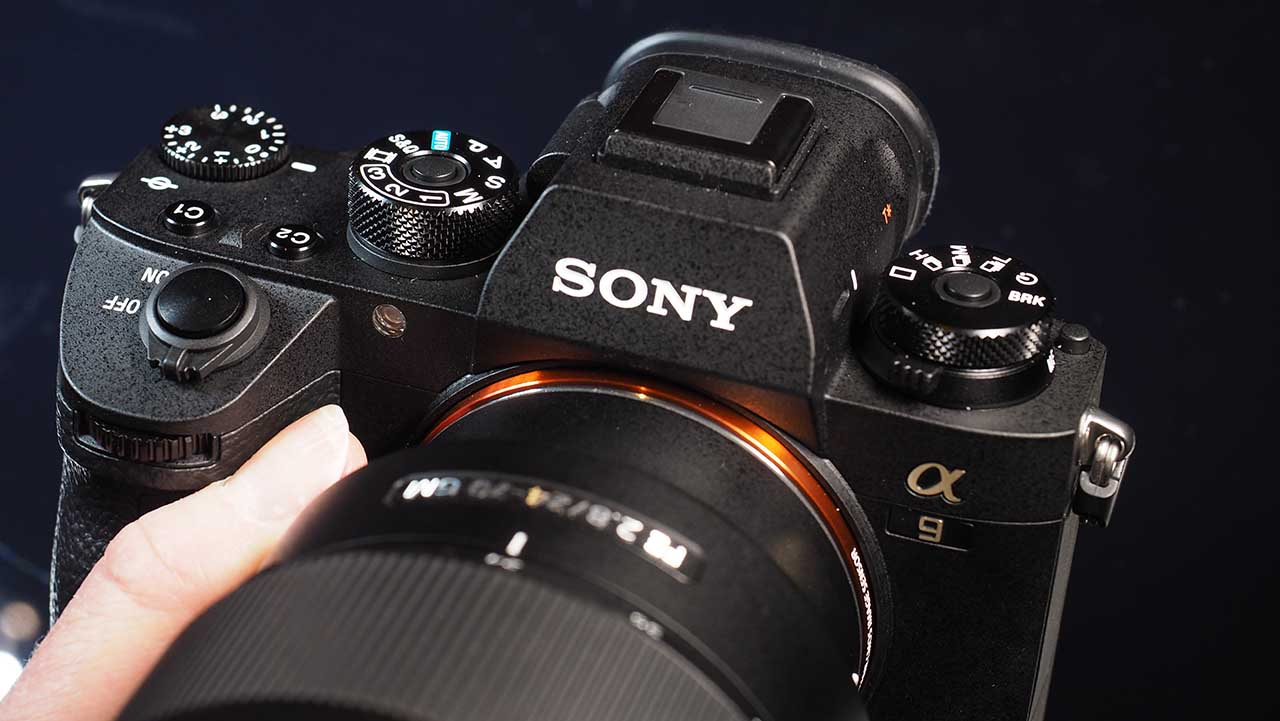
Specification
- Sensor: 24.2-megapixel full-frame sensor
- AF system: 693-point wide area phase detection AF
- Burst Mode in C-AF: 20fps
- Raw Files at 20fps: 241
Sony gave the A9 a 693-point wide area phase detection autofocus (AF) system with an additional 25 contrast detection points. The 693 points cover approximately 93% of the scene, giving unprecedented coverage in a full-frame camera and enabling the A9 to track subjects close to the edge of the frame.
Thanks to the sensor’s faster readout, the Sony A9’s AF system is able to calculate focus and exposure up to 60 times per second. At 20 frames per second means 3 times per shot and it contributes the delivering fast, accurate focusing.
It’s also possible to adjust the tracking sensitivity of the autofocus across 5 steps. The highest setting, 5, is the most sensitive and is intended for use when subject distance is likely to change quickly. The lowest setting, 1, is the least sensitive and should be used when you want the camera to ignore objects coming between the camera and the subject.
There are eight modes for the autofocus system: Wide, Zone, Center, Flexible Spot, Expand Flexible Spot and Lock-on AF (in continuous focus mode) along with Face Detection and Eye AF mode. Each determines which focus points are available for selection.
What’s more, Sony A9 firmware version 6.00 updates the A9’s AI-driven Real-Time Eye AF technology to detect animals as well as humans. You can even set the camera to select either humans or animals depending on your situation.
£3399
$2998For
- Fast, clever AF system
- Superb EVF
Sony A9 II
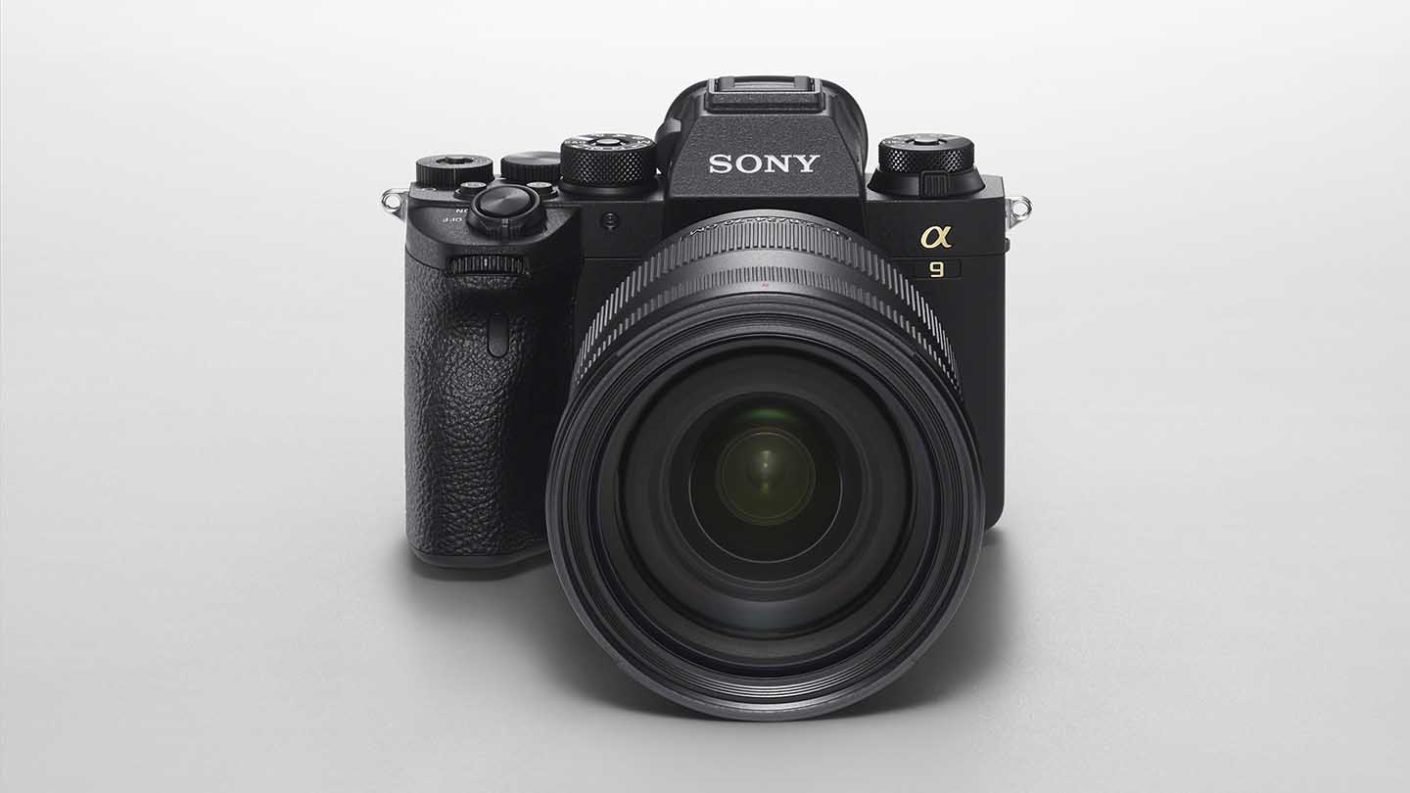
Specification
- Camera type: Full-frame mirrorless
- Sensor: Stacked 24-megapixel full-frame sensor
- Lens mount: FE
- Autofocus: 693-point phase detection AF system, with 425 contrast AF points
- Maximum continuous shooting rate: 20fps
- Maximum video resolution: 4K
- Viewfinder: 0.5-inch electronic viewfinder, 3,6m-dot, 100% coverage
- Screen: 3-inch, 1.4m-dot, tilting, touch-sensitive
- Connectivity: Built-in 1000BASE-T Ethernet terminal
The Sony A9 II retains the same stacked 24-megapixel full-frame sensor as its predecessor, the A9. However, thanks to the addition of Sony’s uprated Bionz X processor, it has faster more precise operation.
The A9 II also retains the A9’s much-lauded 693-point phase detection AF system, which also includes 425 contrast AF points. It also incorporates Sony’s Real Time Eye-AF, Real Time Tracking and Fast Hybrid Focusing modes.
Some of the bigger changes in the A9 II vs the A9 are in its design, which includes new weather-proofing around the A9 II body should appeal to professional users. Sony has also reinforced the areas around ports and battery and memory card doors to prevent ingress of water.
Another new addition to the Sony A9 II is a built-in 1000BASE-T Ethernet terminal, enabling gigabit communication for high-speed data transfer.
The Alpha 9 II also adds a new Voice Memo function that allows users to attach voice memos to specific images that can be replayed when the images are reviewed.
Check the price of the Sony A9 II at B&H Photo Video and Wex Photo Video and get the latest offers at Amazon UK and Amazon US.
£4800
$4500For
- Built for speed
- Outstanding AF
- Enhanced design

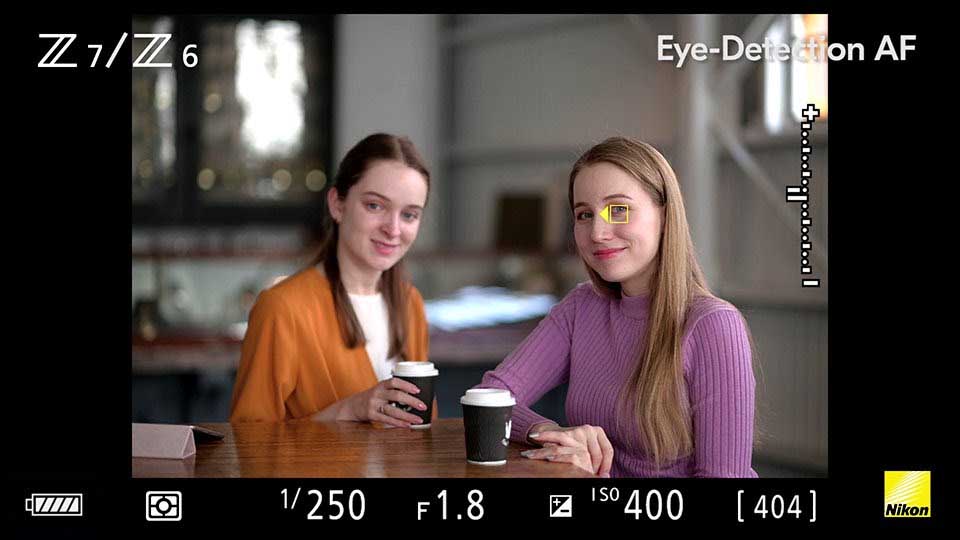



Leave a Reply
You must be logged in to post a comment.